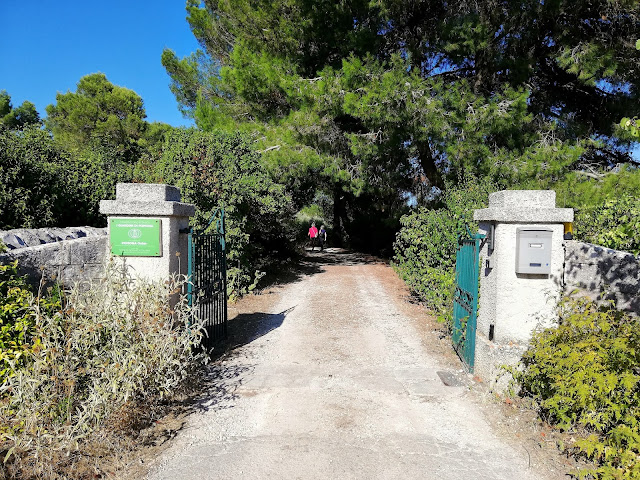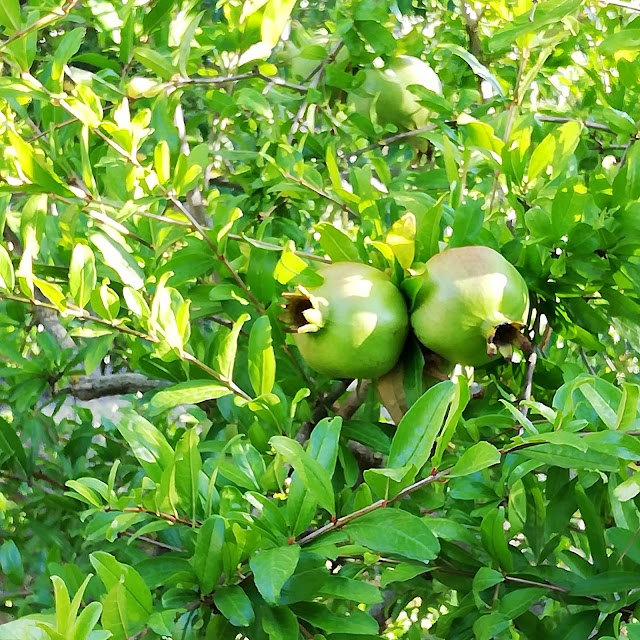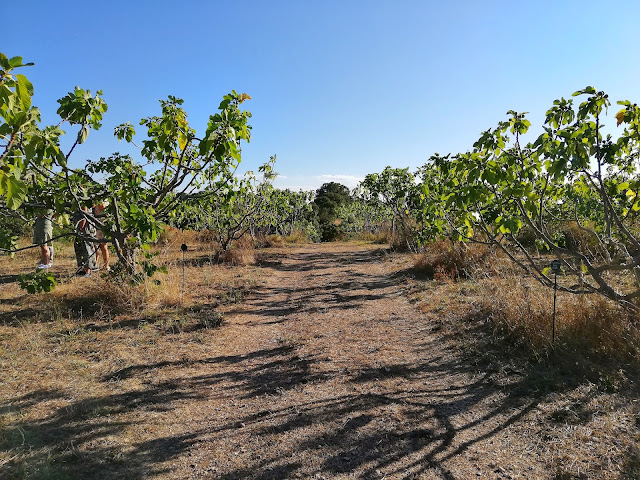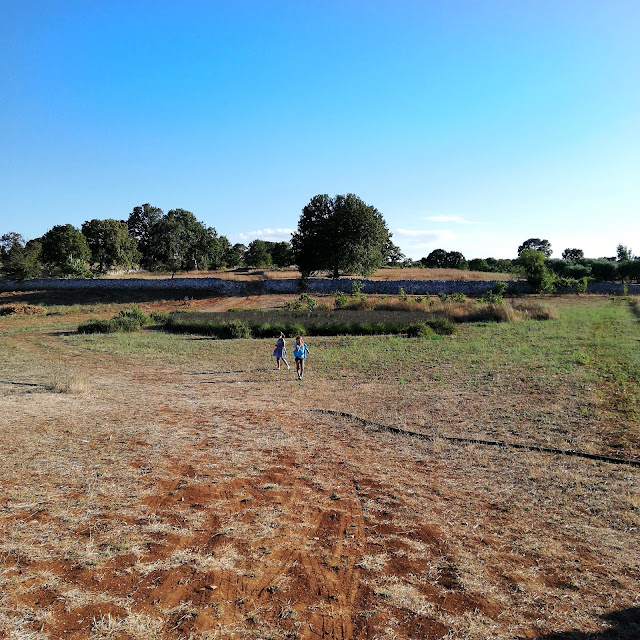Let's discover the botanical conservatory I giardini di Pomona, in the countryside of Cisternino. Let's meet the founder of the conservatory, Paolo Belloni, and talk with him about his project in this interview.
In the middle of Valle d’Itria, in the countryside of Cisternino, there’s a little corner of natural paradise, where you can be accompanied to the discovery of Mediterranean nature and biodiversity with a particular eye for the Apulian one. It’s the botanical conservatory I giardini di Pomona.
I’ve discovered the conservatory almost by chance, combing through the map of Valle d’Itria, and it immediately caught my attention. Before visiting it, I looked for some information on its website and discovered a reality oriented to the valorization of Apulian nature and to its fruition in a sustainable way.
I thought that just a visit wouldn’t have been enough. I wanted to know more! I got in touch with the conservatory founder, Paolo Belloni, to ask him for an interview and to talk about his project on the blog and he kindly acceped.
Hallo Paolo! Thank you for your time! Your project is extremely interesting and, overall, talks about your passion for biodiversity and your love for nature. How did the botanical conservatory I giardini di Pomona come out?

The project was born in 1994 with the idea of recovering old varieties of local trees. The Pomona which the garden is entitled to is the goddess of gardens and orchards, to which we’ve chosen to rely on.
The idea of this project came out from a big problem that worries a lot, in particular universities and scientists: the loss of biodiversity. I’ve always thought that this problem is not just for those who deal with research, but for all of us: it’s about a collective heritage, that it’s important to let people know, to attract their attention on the fact that it’s quickly disappearing and on how important is to have a behavior that allows this heritage to regenerate.
Then I got tired to stay behind a phone and a computer, because I’ve never seen saving plants with a conference, and decided to proceed with the project personally. So, 16 years ago I moved from Milan to Apulia. I merged the surrounding properties to have an area of 10 hectares that we cultivate with organic agriculture: we have more than 1200 varieties of fruit trees.
The conservatory is known for its collection of fig trees. There are 600 varieties of fruit. The biodiversity of fig just in Apulia is extraordinary, there are more than 200 types. Why fig tree?
First of all, it has a exquisite fruit, healthy (no one treats it), energetic, easy to dry and to preserve. It’s the only plant that I know that produces two kinds of fruit, in different times, on the same tree. It’s thrifty (it needs neither much water nor much soil) and generous; it’s the plant that can live close to the sea; it’s easy to cultivate (and one of the first plants to be cultivated) and very resistant to diseases.
Which values guide this activity?
The conservatory has 3 main purposes: to transmit the genetic heritage passed during the centuries by hundreds of farmers; to use water in a thrifty way; to bring the attention on soil that is going toward desertification, so to rebuild the microbiology of soil.
Of course, the love for nature is fundamental. This always passes with an affective relationship, from someone who passes that love. Here, we try to pass that love through knowledge. You can love something only if you know it.
It’s true! I owe my love for nature to my parents and my grandfather, who always brought me in woods for a walk when I was a child. They made me notice all the plants that we met on our path, always with great respect. Which are the main activities that you propose in the conservatory to pass this love?
Besides educational activities, we make a lot of disclosure, proposing an alternative system of cultivation, more respectful of nature and of the environment, of the relationship between plants and between them, the environment and human beings.
This place was born also for scientific research. Here you have the possibility to compare in few meters an infinity of plants of the same species. Actually, we host the botanists of the Royal Horcultural Society. It’s bit sad seeing that people from abroad come here for their Erasmus, when the agricultural institute here has never brought in the conservatory their classes, depriving their students of the possibility to know different kinds of agriculture. Unfortunately, these are the closures that we meet.
Talking about the thrifty use of water, we are developing a method of cultivation that allows to build an autonomous system, avoiding that water drains toward the valley, bringing soil with it. Generally, they use terraces, but building terraces is expensive.
So, first of all, we though with a friend, who is a permaculture, to make a water accumulator that works together with dry stone walls, which are big water producers. Then, we created some reliefs of soil, so when water descends, it’s distributed along the traced line, using the same mechanism of terraces.
Our aim is to plant a food forest in the same place, on different levels, in order to preserve biodiversity. In the reliefs I’ll put tubers; at the level of the soil I’ll plant cucurbits, with large leaves to protect the soil for solar radiation; at the intermediate level I’ll put fabaceae; at the higher level I’ll put the fruit trees that are resistant to dryland farming.
In this way I’ll have a food forest on different levels, where, after 3 years, there will be no need to water. This is because plants love to live together. A wood can regenerate by itself. Agriculture is a great simplification, but nature feels good in complexity.
You start from education to reach a real research! Now I wonder: as education is among the main activities of the conservatory and it’s addressed also and maybe overall to children, how do young people relate with themes like biodiversity?
With children we make observation through play. One of our workshops is “the treasure hunt of the little naturalist”. You can’t love something that you don’t know and in order to make love something, you must make others know it, hoping to manage to pass that love.
The problem is that these experiences are perceived as “school trips”, stand-alone experiences. At least, children should come here 4 times in the year, in the different seasons and overall should have something to take care, otherwise it has not much sense.
They should have the possibility to realize that nature is a fundamental part of what surrounds them and that it’s important to live it and respect it always and not just when they go on a trip. Besides the educational and research activity, the conservatory also is an important tourist attraction and offers the possibility to stay in some little apartments or in the hostel. What kinds of tourist arrive here?
This activity becomes a tourist attraction because figs and citrus fruit are the anticipation of Mediterranean for people from the North. But citrus fruit is easily transportable, differently from figs, which are perishable. You won’t ever eat a good fig if it’s been harvested 5 days before its complete ripening. So, tourists come here to eat them and almost half of them come from Northern Europe.
As for local visitors, the relationship Apulia-fig is complex: it has represented poverty, people went to work with their pockets full of figs and that was what they could afford. It’s an ambiguous relationship. This doesn’t mean that Italian visitors are less attracted compared with foreigners.
Besides, this is a home base for both tourists who follow the cycle path of the aqueduct and the Cammino Materano. We also have a hostel to host cyclists and those who can’t afford to stay in the apartments here, but still want to stop in the gardens with less expensive costs. I’m interested in giving the possibility to access.
It’s a solution that becomes all-around sustainable, for the place and the tourist, who can stay in a sustainable way even with a low budget. With such an ambitious project, have you met some difficulties in its realization? For example, with neighbors or with bureaucracy…
I can’t say real problems. For example with neighbors, about the kind of agriculture that we make, you don’t have to listen to critics too much. At the end, you must do what you think. In a certain sense, I went on my own path.
According to me, a project is like a rare seed, that has inside all its development. If you’re not a good gardener and it dies, it’s useless to try to keep it alive. If it’s dead, it’s dead. But if it starts developing, it has inside all its evolution. When I arrived here, fig tree has been the first plant that I got and I focused on the valorization of all parts of the plant and its properties in relation with human health.
As for the rest, there has been no other problem, also because they sold me their lands. Perhaps just with the owner of the land in the middle, but we know he was the only one who could sell it and I was the only one who could buy it, so we made a deal.
Even with bureaucracy I had no problems. When I presented my project to the Region of Apulia , I proposed a botanical conservatory that would have been a tourist attraction, asking for subsidies to rearrange the trullis; the remuneration coming from the trullis would have helped the preservation of nature.
Now, in the Territorial Landscape Plan, among the good practices of the Region of Apulia there’s I gardini di Pomona.
I’m very happy to have discovered this reality, so careful and active not just in the preservation of local plants, but also engaged in their valorization.
There are not so many activities that are involved in the maintenance of biodiversity and work for disclosure with so much love and passion. This place is a treasure for all of us and I thank Paolo for his effort in the preservation of this biodiversity that is a bit ours, too.
You can visit the conservatory every day, except on Thursday, from h. 9.00 to h. 13.00 and from h. 16.00 until the sunset. The visit lasts 1-2 hours and you need to book it.
The cost of the visit is € 8,00 for adults; € 4,00 for children; € 6,00 for visits without guide.
If you want to know more about the botanical conservatory I giardini di Ponoma, you find all the information on its website www.igiardinidipomona.it






Commenti
Posta un commento
Feel free to leave a comment!
I would be glad to know your opinion! ;)
Thank you! :)